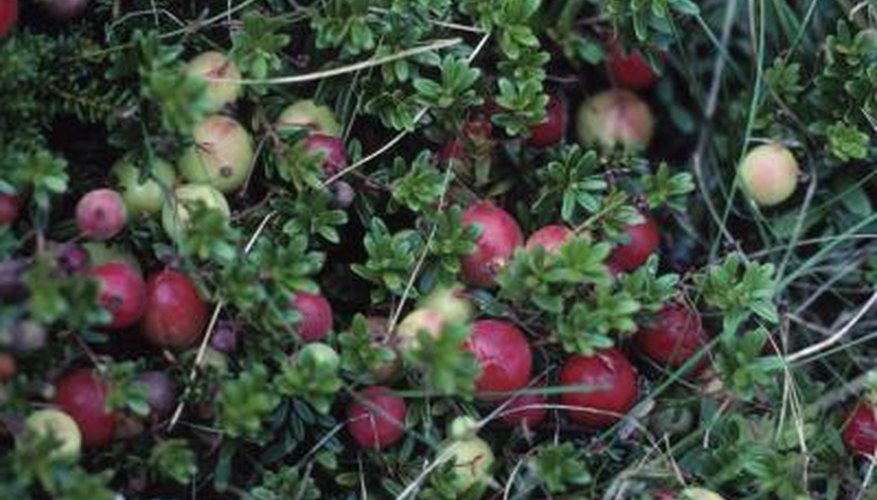Berry bushes and plants generally fall into two categories -- those that produce round, smooth fruit and those that produce aggregate fruit, or fruit formed in small clusters. All aggregate fruit, such as raspberries, blackberries and their wild cousins, is non-toxic and safe to eat. You need to positively identify round berries, before eating them, because some are poisonous.
Inspect the branches of the plant. Bramble fruit form on thin canes. Many bramble fruit plants have thorns, and the canes may be erect, trailing or arching. Young canes are soft and green while older canes are brown and may have peeling bark. Round berry plants usually have a shrublike appearance and may or may not have thorns.
- Berry bushes and plants generally fall into two categories -- those that produce round, smooth fruit and those that produce aggregate fruit, or fruit formed in small clusters.
- Many bramble fruit plants have thorns, and the canes may be erect, trailing or arching.
Look at the leaves. Strawberry plants have distinctive scalloped leaves. Raspberry and blackberry plants have lobed leaves with a wrinkled texture. Blueberry plants have glossy oval leaves and a shrublike appearance. Cranberries and lingonberries are low-lying plants with small, evergreen leaves. Currants have lobed leaves that resemble maple leaves while chokecherries produce simple, elongated oval leaves.
- Strawberry plants have distinctive scalloped leaves.
- Cranberries and lingonberries are low-lying plants with small, evergreen leaves.
Consider the growing conditions. Cranberries and lingonberries grow in moist, boggy areas. Raspberries, blackberries, serviceberries and chokecherries grow along roadsides, in wooded areas and in meadows. They tolerate full to partial sun and a wide range of soil types.
Watch for flowers and fruit. Most berries, including raspberries, strawberries and blackberries, produce white flowers that may have a yellow centre. Blueberry blossoms are white, bell-shaped flowers. Raspberries, blackberries, loganberries and blackcaps all produce a characteristic aggregate fruit although colour and size may vary. Chokecherries, elderberries, blueberries, huckleberries and serviceberries all produce round red to purple berries in late summer to fall. Each one has a distinctive taste. Huckleberries and serviceberries taste similar to blueberries. Elderberries and chokecherries are very tart and best used in pies and sauces.
- Watch for flowers and fruit.
- Huckleberries and serviceberries taste similar to blueberries.
